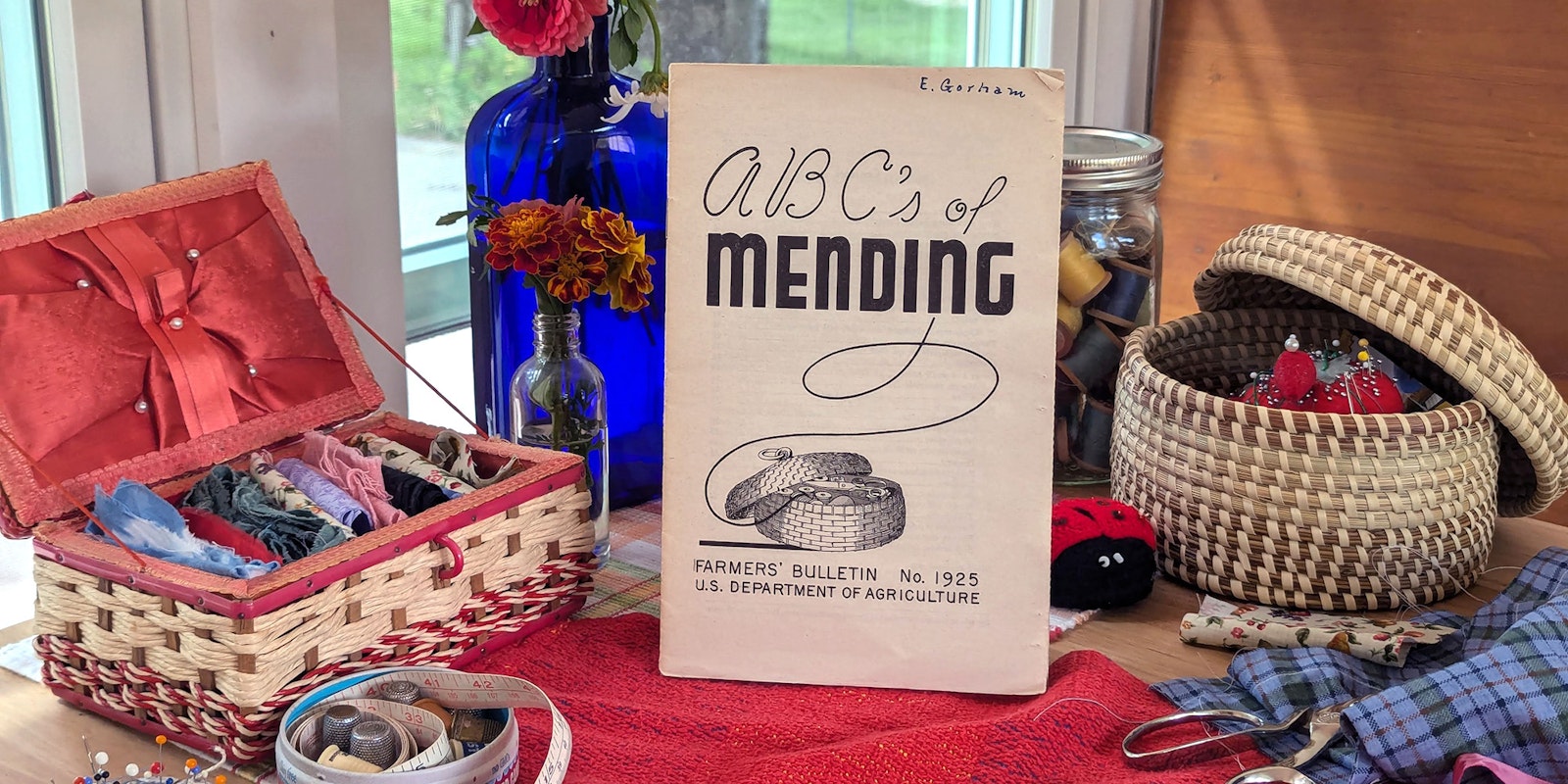Like many people today, I am concerned about “fast fashion”—the proliferation of cheap clothing that is not meant to last and that is often manufactured in non-worker-friendly conditions. In contrast, the movement for “slow fashion” emphasizes making, maintaining, and mending clothing with longevity in mind. I was delighted to find a pamphlet called ABC’s of Mending at a used book sale, and I soon realized that I held a piece of textile history in my hands.
ABC’s of Mending was issued by the US Department of Agriculture in 1942, a year after the United States entered World War II, and it featured research by the Bureau of Home Economics. The Bureau’s bulletins taught homemakers how to cope with food rationing as well as with shortages of wool, silk, leather, and other materials and items needed for military use.
The writer of ABC’s of Mending was Clarice Scott, associate home economics specialist in the USDA’s Textiles and Clothing Division, best known for designing work clothing for women in wartime jobs (think Rosie the Riveter!).
In ABC’s of Mending, Scott writes that “mending comes under the head of patriotic duty these days. It’s part of wartime good citizenship to take care of the things we have . . . to waste nothing.”
Mending by the Book
According to Scott, the job of mending begins long before the wear and tear appears. She recommends looking over ready-made clothing before it is worn. “With much of the skilled labor gone to war,” she cautions, “there will probably be considerable poor workmanship. . . . A few well-placed stitches can save much patching and darning later on [and] help you get the best possible service from what you buy.”
In addition, she suggests, “Look over your clothing, bedding, towels, [and] linens regularly with an eye to needed mending. If you catch breaks before they grow, you’ll cut down a lot on mending time, [and] the damaged places can be mended more easily and will show less.”
The next step she recommends is to analyze. Is the material loosely woven and likely to fray? Is the fabric delicate or sturdy? Do the seams need to be reinforced because they are in an area of the garment that will take a lot of strain? Does the material have a design that will need to be matched when mended?
Unlike today’s trend of visible mending, Scott’s goal is to guide the reader to reproduce the original material as closely as possible: “A well-done mend can make [clothing] like new again. Such is the magic of the art of mending.”
 Diagrams from ABC’s of Mending
Diagrams from ABC’s of Mending
Because mending is a never-ending task, she recommends keeping a mending basket handy. “With materials all collected,” Scott explains, “it is easy to pick up bits of mending in your spare time and not have the chore of hunting for your equipment.” A general guide follows, including step-by-step instructions and clear illustrations. The guide covers basic stitches, including hemstitch, overhand, backstitch, buttonhole, slip stitch, blanket stitch, and overcast. Most repairs can be sewn by hand or machine.
Fortunately, the complete text (including illustrations) of ABC’s of Mending, along with Clarice Scott’s other bulletins, can be found online at the Internet Archive and can easily be downloaded as a PDF. Her simple prose and the useful pictures are as helpful today as they were when it was first published. Let’s get mending! Find the archive here.
Resources
- Dreilinger, Danielle. The Secret History of Home Economics: How Trailblazing Women Harnessed the Power of Home and Changed the Way We Live. New York: W. W. Norton & Company, 2022.
- Scott, Clarice L. ABC’s of Mending. US Department of Agriculture, 1942 (archive.org/details/CAT87203517); 1943 (archive.org/details/CAT10308579); 1946 (archive.org/details/CAT87205377).
- Wilson, Kax. “Making Do: Memories of Mending.” PieceWork, March/April 1997, pieceworkmagazine.com/making-memories-mending.
Lisa-Anne Bauch is a weaver, knitter, and lover of historical textiles. At long last, she is learning how to sew.

